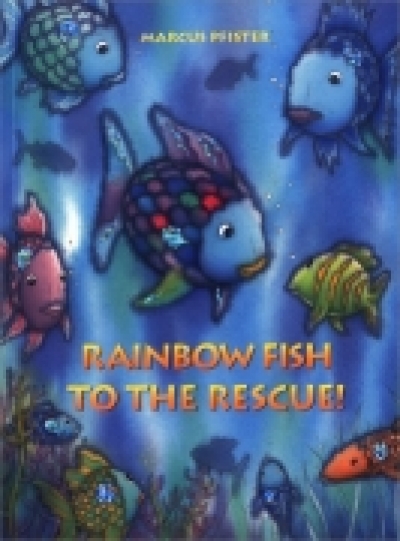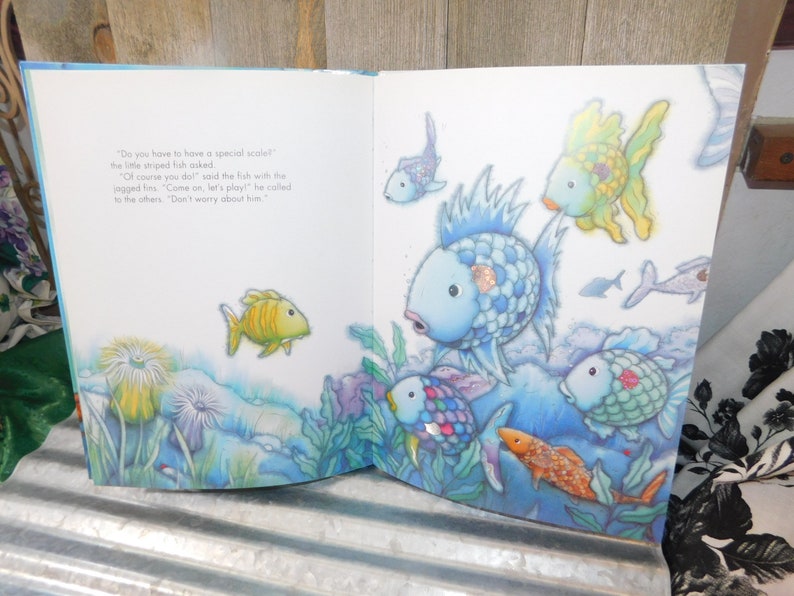

Because the swarm only disliked the newcomer for not having a brilliant scale like them - despite the fact that they bullied the original owner of the brilliant scales (he was born with them) to give them up. While the first one is more questionable than this one, this second volume still doesn‘t feel right. Nowadays, I have a different view of them. Once upon a time, as mentioned in my review of the first book, I had loved these stories (yes, both). It does it relatively well considering the young target audience.

Therefore, this book is about integration and being open when new people arrive. A bigger threat is necessary to make Rainbow Fish speak up and the swarm to accept their newest member. Rainbow Fish sees this, but does nothing at first because he fears he‘ll lose his new-found friends again. He wants to be friends with Rainbow Fish and the others, but they are less than welcoming. One day, a new fish arrives after having lost his own swarm. The story is that of the swarm now having grown into a tight-knit community after Rainbow Fish has given away all but one of his brilliant scales. The second book about the Rainbow Fish is as ambiguous as the first, maybe even more so. Marcus and his wife, Kathryn, work together in Berne, where they live with their three children. The foil stamping is then applied during the production process after the pages are printed and before the final binding. When the illustration is complete he cuts the paper from the wooden board.įor books that feature holographic foil stamping, he then tapes a piece of transparent film over the art and indicates with a black marker where the foil stamping should be.

For sharper details, he first lets the paper dry, then paints the final picture layer by layer. For backgrounds and blended contours, he uses wet paint on wet paper to get a softer effect. At this point, he is ready to begin painting. He then copies his rough sketches onto the paper in pencil. He begins each book by stretching watercolor paper over a wooden board so that it won't warp when wet. Marcus does most of his illustrations for children's books in watercolors. His best-known work to date is The Rainbow Fish, which has remained on bestseller lists across the United States since 1992. In 1983, he decided to dedicate more time to artistic pursuits, and began to write and illustrate his first book, The Sleepy Owl, which was published in 1986. Marcus Pfister was born in Berne, Switzerland, and began his career as a graphic artist in an advertising agency.


 0 kommentar(er)
0 kommentar(er)
